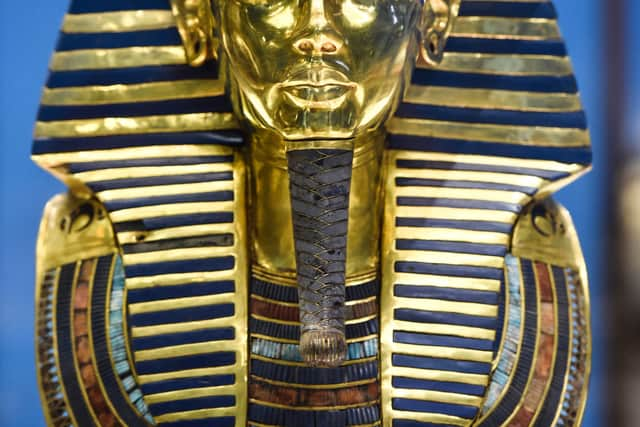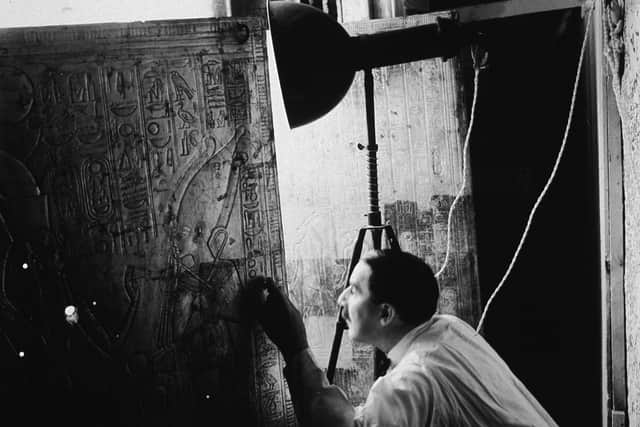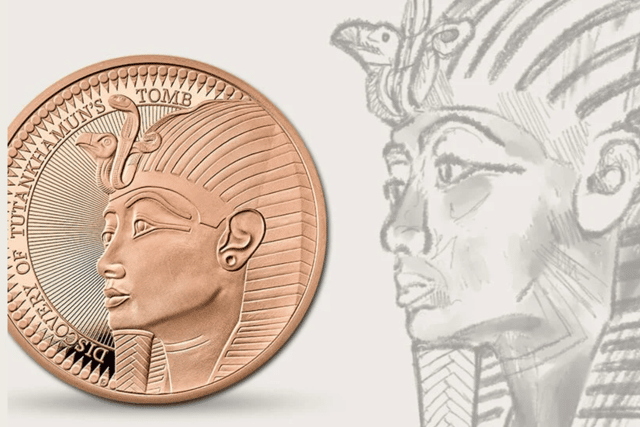Tutankhamun 100th anniversary: Royal Mint releases coin commemorating discovery of boy king’s tomb
and live on Freeview channel 276
Designed by designer Laura Clancy, the Royal Mint coin’s reverse features a profile of Tutankhamun’s gold mask, with an edge inscription reading ‘THE VALLEY OF THE KINGS’.
On November 4, 1922, archaeologist Howard Carter raised a candle to look into the ancient Egyptian pharaoh’s tomb for the first time in 3,000 years.
Advertisement
Hide AdAdvertisement
Hide Ad

Kensington-born Carter, described that moment, saying: "At first I could see nothing, the hot air escaping from the chamber causing my candle flame to flicker, but presently, as my eyes grew accustomed to the light, details of the room within emerged slowly from the mist, strange animals, statues and gold - everywhere the glint of gold."
The discovery of the 18th dynasty king was the first known largely intact royal burial from ancient Egypt, and the only one dating from Egypt’s New Kingdom (c1550- 1069. Despite being the smallest tomb in the Valley of Kings, it contained about 5,000 artefacts.
Tutankhamun’s tomb is the only one dating from Egypt’s New Kingdom (c.1550–1069 BC). The contents provided an unparalleled insight into ancient Egyptian craftmanship and funerary practices.


How Tutankhamun died remains a mystery, much debated by archaeologists, with theories ranging from a fatal chariot crash to sepsis from a broken leg. Modern forensic technologies and DNA tests showed that the 19-year old pharaoh suffered from malaria, a fractured lower leg and congenital deformities associated with inbreeding due to brothers and sisters marrying among Egyptian royalty.
Advertisement
Hide AdAdvertisement
Hide AdCT scans of Tutankhamun found a cleft palate and fairly long head, as well as a curved spine and fusion of the upper vertebrae.


Although Carter was at first feted for the discovery of the tomb, he was later ostracised for his irascible temper. “He was not easy to work with,” says Aromir Malek, keeper of the Griffith Institute in Oxford. “He was quite often short tempered, perhaps not always tactful.”
Carter died in relative obcurity at his London flat at 49 Albert Court, next to the Royal Albert Hall, on March 2, 1939, aged 64 from Hodgkin’s disease.
Bringing the boy king to London
A new exhibition at the Petrie Museum in London, Tutankhamun the Boy: Growing Up in Ancient Egypt, marks the centenary of Carter’s discovery.
Advertisement
Hide AdAdvertisement
Hide AdRunning until September 2023, the exhibition reveals the little-known stories of Tutankhamun’s life as a young boy at the royal palaces of Amarna. Objects and archives from the Petrie Museum’s collection will explore how people lived, thousands of years ago.
The project is working in collaboration with the University of Cambridge’s Amarna Project and will explore through the experiences and views of children in Egypt and East London today.
Comment Guidelines
National World encourages reader discussion on our stories. User feedback, insights and back-and-forth exchanges add a rich layer of context to reporting. Please review our Community Guidelines before commenting.